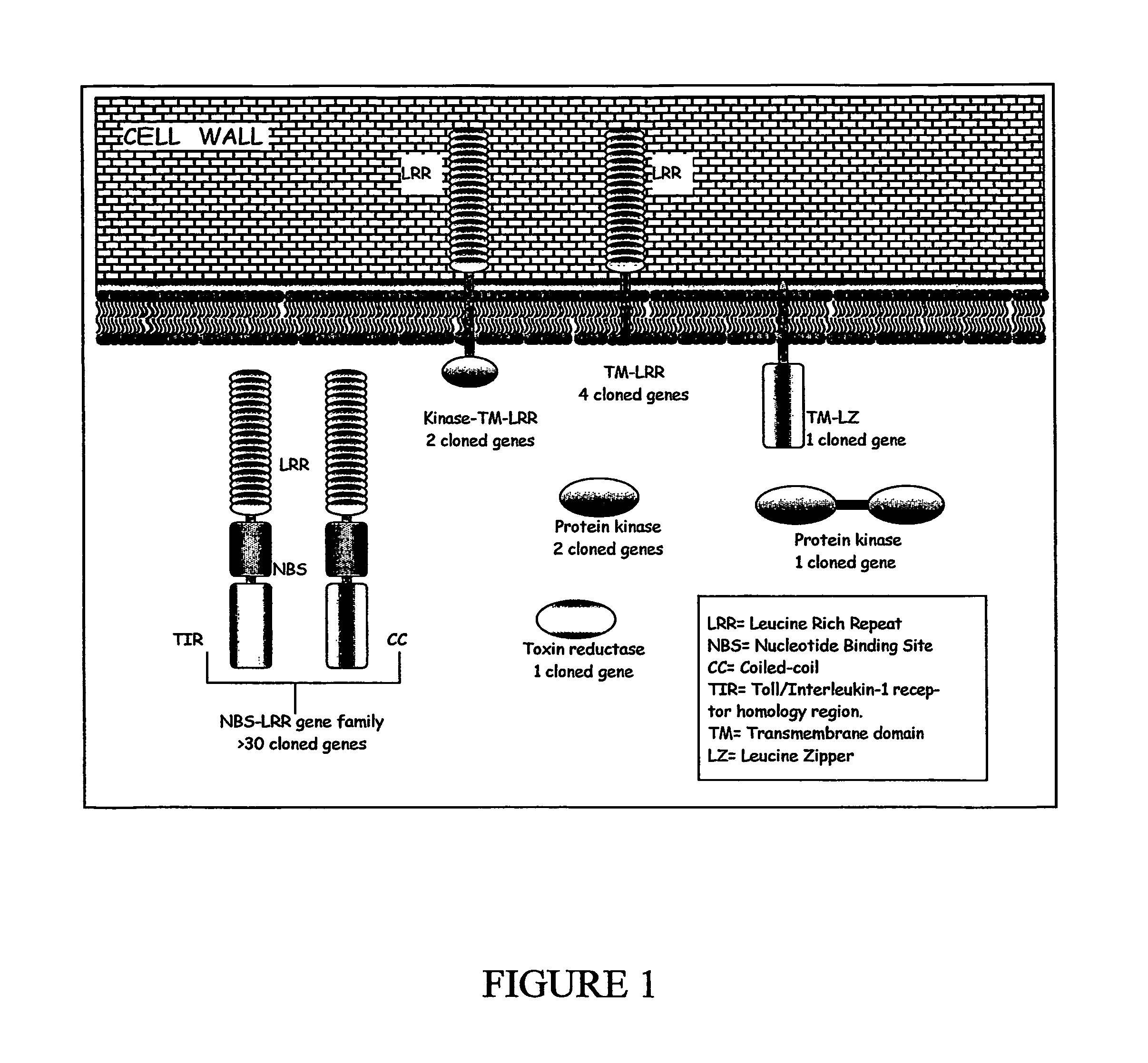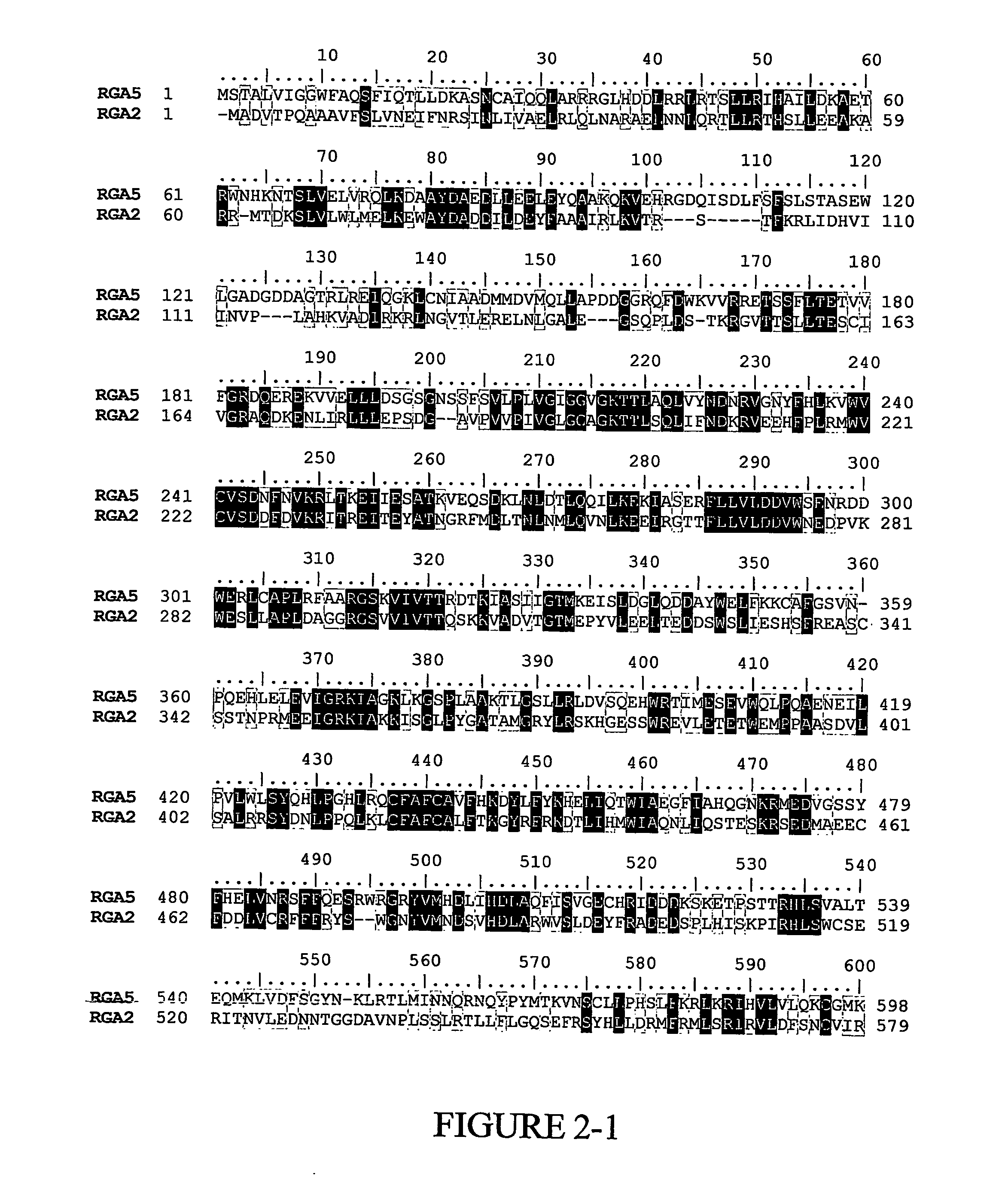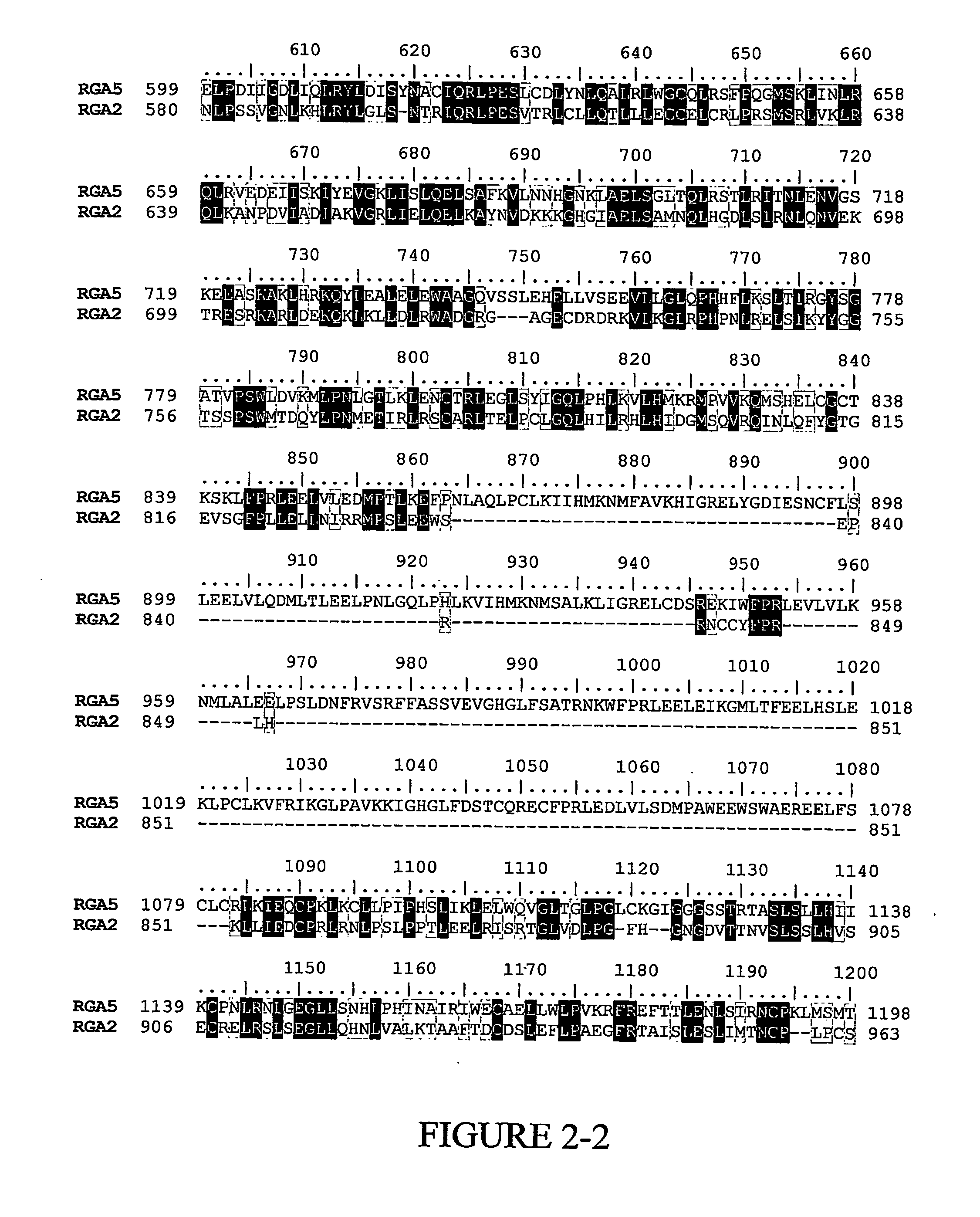Banana Resistance Genes And Uses Thereof
a technology of resistance genes and bananas, applied in the field of pathogenic resistance, can solve the problems of severe economic losses, most destructive and notorious, and severe impact on the world export industry, and achieve the effect of low, medium or high stringency
- Summary
- Abstract
- Description
- Claims
- Application Information
AI Technical Summary
Benefits of technology
Problems solved by technology
Method used
Image
Examples
example 1
Identification of R Genes from M. acuminata
CTAB total DNA Purification
[0240] Genomic DNA was extracted using the CTAB protocol of Stewart & Via (1993). Briefly, leaf tissue was frozen in liquid N2 and ground in a mortar and pestle. Powdered tissue was resuspended in CTAB Buffer (1% Sarcosine, 0.8 M NaCl, 0.022 M EDTA pH8.0, 0.22 M Tris-HCl pH 7.8, 0.8% CTAB, 0.14 M Mannitol) at 65° C. An equal volume of chloroform:isoamyalcohol (24:1) was immediately added, mixed by inversion and incubated at 65° C. for 10 min with occasional inversion. Samples were centrifuged for 5 min at 14000 rpm in a microfuge to separate phases. The aqueous layer was collected and an equal volume of isopropanol added. DNA was spooled out, washed in 70% ethanol, and allowed to dry before resuspending in 100 μL dH2O containing RNaseA (1 mg / mL).
Purification of Total RNA
[0241] Total RNA extractions were performed using the method of Chang et al. (1993). Tissue was frozen in liquid N2 and ground to a powder in ...
PUM
| Property | Measurement | Unit |
|---|---|---|
| temperature | aaaaa | aaaaa |
| pH | aaaaa | aaaaa |
| temperature | aaaaa | aaaaa |
Abstract
Description
Claims
Application Information
 Login to View More
Login to View More - R&D
- Intellectual Property
- Life Sciences
- Materials
- Tech Scout
- Unparalleled Data Quality
- Higher Quality Content
- 60% Fewer Hallucinations
Browse by: Latest US Patents, China's latest patents, Technical Efficacy Thesaurus, Application Domain, Technology Topic, Popular Technical Reports.
© 2025 PatSnap. All rights reserved.Legal|Privacy policy|Modern Slavery Act Transparency Statement|Sitemap|About US| Contact US: help@patsnap.com



